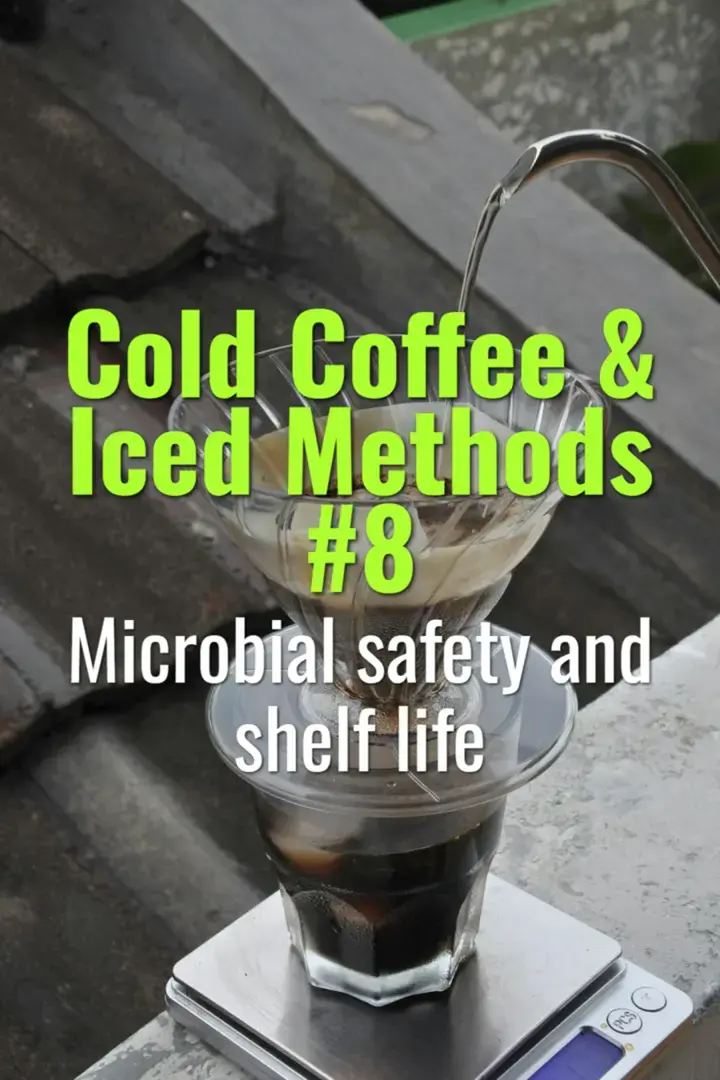Microbial safety and shelf life
Why microbial growth is a concern in cold coffee, how to minimize risks, and best practices for safe storage and shelf life management.
- Coffee Basics Nerds
- 2 min read
Article 8 of 12 in Cold Coffee & Iced Methods/

Microbial Risks in Cold Coffee
- Cold brewing occurs at room or refrigerated temperatures without pasteurization.
- Coffee’s acidity (~pH 4.8–5.2) slows but does not stop microbial growth.
- Risks: mold, yeast, and bacterial contamination, especially if hygiene is poor.
Shelf Life Challenges
- Hot-brewed coffee: Relatively safe when consumed quickly, but stales in hours.
- Cold brew / iced methods: Stored for days → risk of microbial spoilage increases.
- Cloudiness, sour off-flavors, or visible growth indicate contamination.
Safety Practices
- Sanitation: Clean all equipment (brewers, pitchers, containers) thoroughly.
- Filtration: Removing fines reduces microbial surface area and slows spoilage.
- Water Quality: Use filtered, potable water free from contaminants.
- Storage Temperature: Keep cold coffee ≤4 °C (39 °F) to minimize microbial growth.
Shelf Life Guidelines
- Home/Small Batch: Best consumed within 24–48 hours refrigerated.
- Commercial Production:
- Pasteurization or sterile filtration required for bottled cold brew.
- Nitrogen flushing or pressurized systems extend shelf life.
- Typical shelf life: 1–2 weeks refrigerated if sealed properly.
Regulatory Considerations
- Some regions classify cold brew as a potentially hazardous food.
- Food safety standards may require HACCP plans for commercial bottling.
Practical Tips
- Brew smaller, frequent batches rather than storing large volumes for long.
- Always label containers with brew date.
- Train staff to discard old or questionable batches.
Summary
Cold coffee carries microbial risks due to non-sterile brewing and extended storage. Proper sanitation, refrigeration, and short shelf lives are critical for safety. Commercial operations require pasteurization or sterile packaging to ensure consistent, safe products.